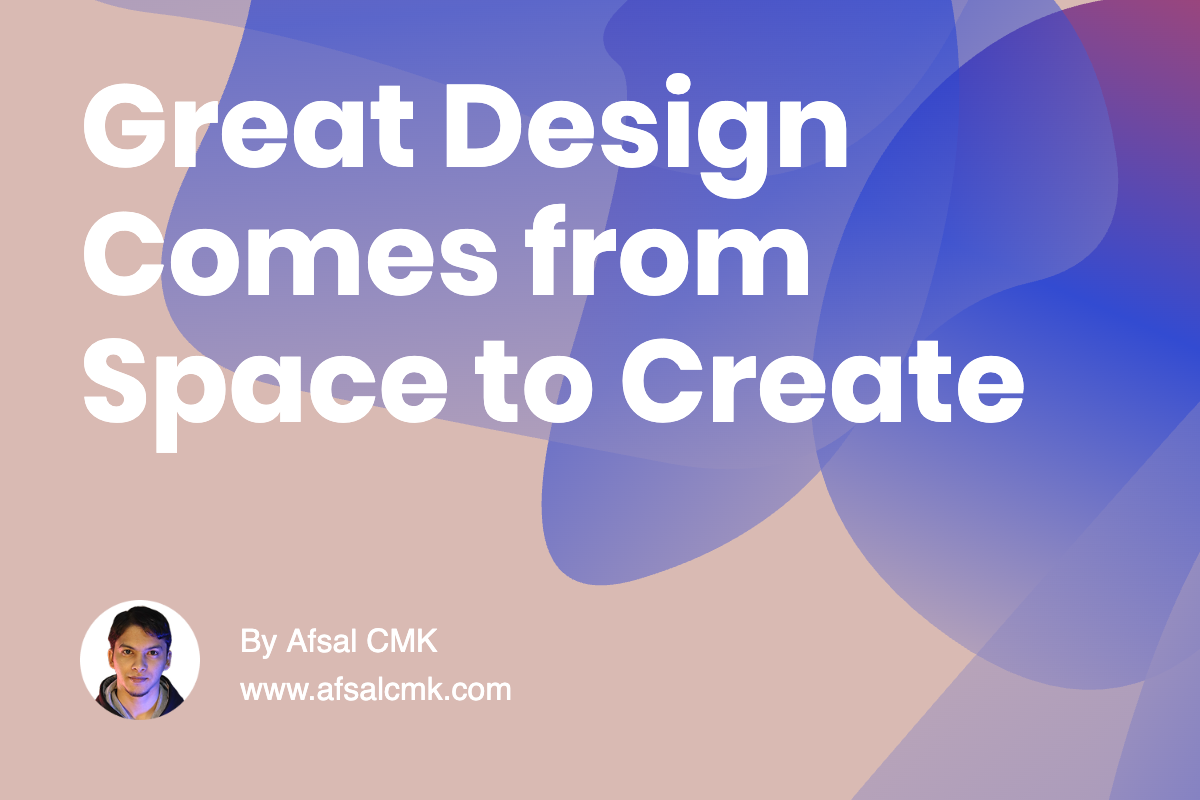
Great Design Comes from Space to Create
Design craft doesn’t happen by accident. It’s a combination of time, focus, scope, and the environment a designer works in. When any one of these is missing, the quality suffers - not because the designer lacks skill, but because the space to think, refine, and explore is limited.
As someone who has led and mentored designers over the years, I’ve seen how much difference it makes when people are given direction and freedom. Clear direction sets the boundaries of purpose - it tells the team what problem we’re solving, what the vision looks like, and why it matters. Freedom, on the other hand, gives them ownership - the ability to explore, experiment, and find their own creative path to that goal.
Great design craft lives at the intersection of these two forces. Too much direction can become control; it narrows creativity and forces sameness. Too much freedom without direction leads to chaos - great ideas, but no cohesion. But when balanced, the result is thoughtful design that feels consistent yet fresh - grounded in purpose but full of imagination.
Time is another crucial ingredient. Craft thrives in an environment that allows iteration and reflection. Quick turnarounds and reactive deadlines often lead to surface-level polish, not deep craftsmanship. Giving designers time doesn’t mean slowing everything down - it means designing processes that respect creative flow. Some of the best outcomes I’ve seen came from teams who had the chance to explore two or three different directions before settling on one. That process builds confidence, depth, and ownership.
Scope plays a big role, too. A design task without clear boundaries can be overwhelming; one that’s too narrow can feel restrictive. Defining the right scope - something challenging yet achievable - gives designers a clear canvas to apply their craft meaningfully. When teams understand both the scale and purpose of their work, they make smarter trade-offs, focusing effort where it matters most.
As a leader, my role has always been to enable that balance - to create an environment where designers can bring their best. I guide them toward what’s important, protect their focus from unnecessary noise, and ensure they have enough space to think independently. Some of the most rewarding moments are when a designer surprises you - when they take a direction you gave and elevate it into something far beyond what was expected. That’s what happens when people feel trusted to create.
Design craft, ultimately, is about care. Care in how things look, how they feel, and how they work together. It’s the difference between a product that functions and a product that resonates. And care can’t be rushed - it needs the right mix of clarity, space, and encouragement to grow.
So, whether leading a design team or working within one, it’s worth remembering - craft quality isn’t a solo act. It’s built through collaboration, guided by purpose, and strengthened by freedom. When designers are trusted with both responsibility and space, they not only create better outcomes but grow into more confident, thoughtful practitioners. That’s where real design maturity begins - in the craft, not the chaos.